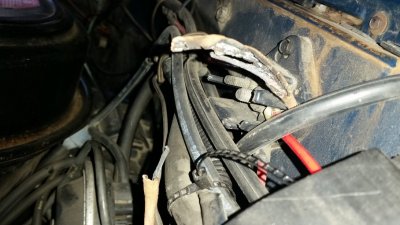one4fun
Full Access Member
- Joined
- Jun 1, 2013
- Posts
- 175
- Reaction score
- 6
- Location
- Portland, oregon
- First Name
- chris
- Truck Year
- 1986
- Truck Model
- k10
- Engine Size
- 350
86 K10, 350.
Had been driving my truck without any issues, parked in a parking lot for 5 minutes, started the truck up, pulled out of the parking lot, stepped on the gas, truck barely moved, like it was about to stall. Pulled it back into parking lot, turned off key, then turned it back on and nothing would happen, totally dead
No:
Seat belt buzzer,
Check engine light
gauges
radio
heater blower
ignition
Hazard lights
Not acting like a dead battery, just as if there is no power to the column. Head lights, high and low beam both work, dome light works. Checked battery connections and they are solid, battery is charged. Chassis grounds are good, starter wire connections are tight.
I'm thinking is either the ignition key switch or the electrical switch down at the bottom of the column, on the top side where you can't reach. But, the power door locks don't work now either, which I thought was odd since those don't need the key to work.
But, the power door locks don't work now either, which I thought was odd since those don't need the key to work.
Suggestions on where to start troubleshooting?
Thanks.
Had been driving my truck without any issues, parked in a parking lot for 5 minutes, started the truck up, pulled out of the parking lot, stepped on the gas, truck barely moved, like it was about to stall. Pulled it back into parking lot, turned off key, then turned it back on and nothing would happen, totally dead
No:
Seat belt buzzer,
Check engine light
gauges
radio
heater blower
ignition
Hazard lights
Not acting like a dead battery, just as if there is no power to the column. Head lights, high and low beam both work, dome light works. Checked battery connections and they are solid, battery is charged. Chassis grounds are good, starter wire connections are tight.
I'm thinking is either the ignition key switch or the electrical switch down at the bottom of the column, on the top side where you can't reach.
Suggestions on where to start troubleshooting?
Thanks.
Last edited:


